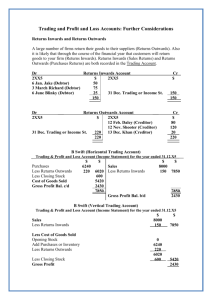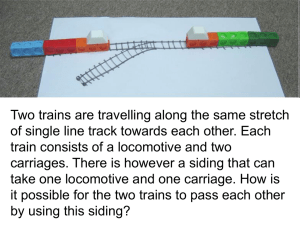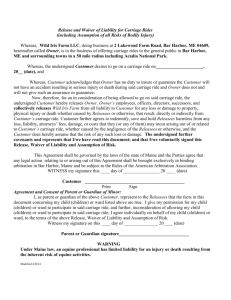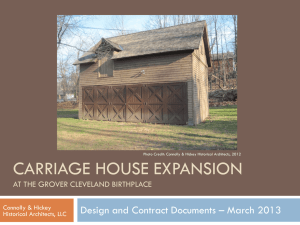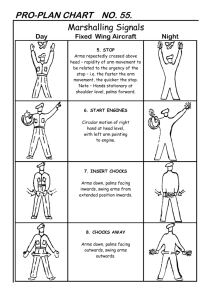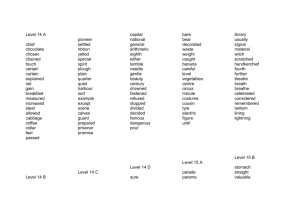The Balance Sheet
advertisement
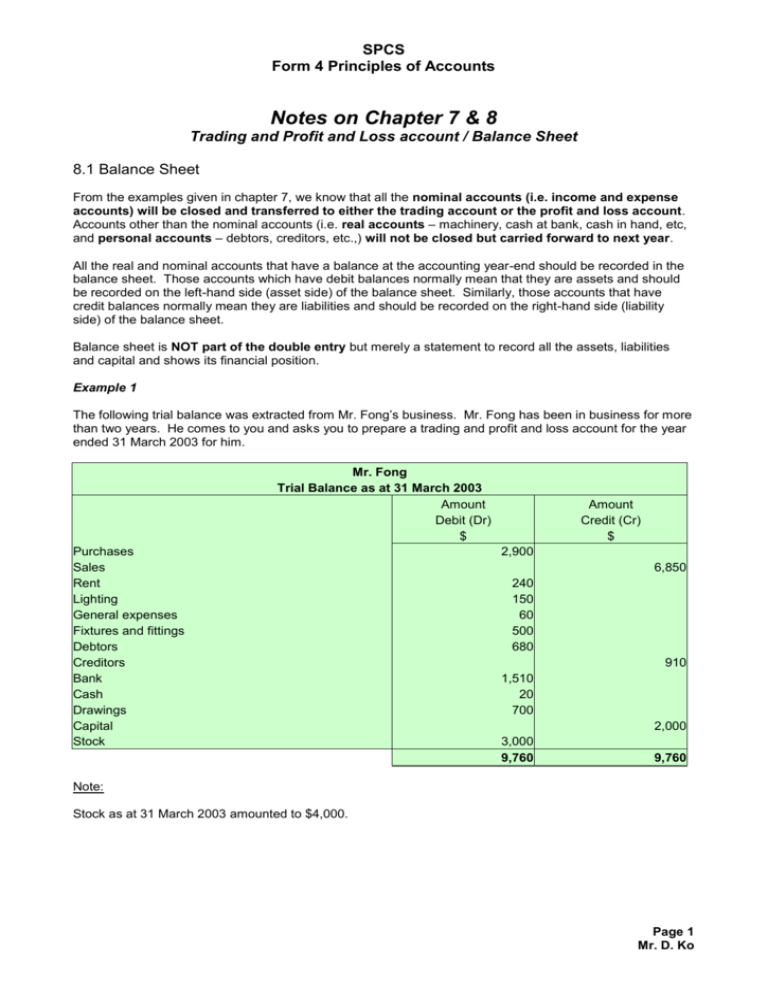
SPCS Form 4 Principles of Accounts Notes on Chapter 7 & 8 Trading and Profit and Loss account / Balance Sheet 8.1 Balance Sheet From the examples given in chapter 7, we know that all the nominal accounts (i.e. income and expense accounts) will be closed and transferred to either the trading account or the profit and loss account. Accounts other than the nominal accounts (i.e. real accounts – machinery, cash at bank, cash in hand, etc, and personal accounts – debtors, creditors, etc.,) will not be closed but carried forward to next year. All the real and nominal accounts that have a balance at the accounting year-end should be recorded in the balance sheet. Those accounts which have debit balances normally mean that they are assets and should be recorded on the left-hand side (asset side) of the balance sheet. Similarly, those accounts that have credit balances normally mean they are liabilities and should be recorded on the right-hand side (liability side) of the balance sheet. Balance sheet is NOT part of the double entry but merely a statement to record all the assets, liabilities and capital and shows its financial position. Example 1 The following trial balance was extracted from Mr. Fong’s business. Mr. Fong has been in business for more than two years. He comes to you and asks you to prepare a trading and profit and loss account for the year ended 31 March 2003 for him. Mr. Fong Trial Balance as at 31 March 2003 Amount Debit (Dr) $ Purchases Sales Rent Lighting General expenses Fixtures and fittings Debtors Creditors Bank Cash Drawings Capital Stock Amount Credit (Cr) $ 2,900 6,850 240 150 60 500 680 910 1,510 20 700 2,000 3,000 9,760 9,760 Note: Stock as at 31 March 2003 amounted to $4,000. Page 1 Mr. D. Ko SPCS Form 4 Principles of Accounts Mr. Fong Trading and Profit and Loss Account for the year ended 31 March 2003 Accounts not closed include: Fixtures and fittings 2003 Apr. 1 Balance b/f $ 500 Debtors 2003 Apr. 1 Balance b/f $ 680 Creditors 2003 Apr. 1 $ 910 Balance b/f Bank Cash Page 2 Mr. D. Ko SPCS Form 4 Principles of Accounts Drawings * Capital * * Completion of capital account 8.2 Drawings As drawings reduce capital, at the end of the financial year, the total amount of drawings will be closed and transferred to the capital account. The entries are: Dr: Cr: Capital account Drawings account 8.3 Net profit Net profit is derived from profit and loss account and is actually part of double entry. We know that opening capital + net profit = new capital. Therefore, the net profit should be entered in the credit side of the capital account. Capital will then increase. The entries are as follows: Dr: Cr: Profit and loss account Capital account In case of net loss, the entries will be as follows: Dr: Cr: Capital account Profit and loss account Mr. Fong Balance Sheet as at 31 March 2003 Page 3 Mr. D. Ko SPCS Form 4 Principles of Accounts 8.4 Carriage inwards (P.163) When you buy goods, the cost of carriage inwards may either be included as part of the price, or else the firm may have to pay separately for it. New Term: Carriage inwards: - The cost of transportation of goods purchased. - The cost of transport of goods into a business. When carriage inwards is paid separately, we have to add this transport cost to purchases in the trading account. The entries are: Dr: Cr: Carriage inwards Cash / Bank Dr: Cr: Trading account Carriage inwards When the Trading Account is prepared, the carriage inwards account is then transferred to the debit side of the Trading Account. The reason for this treatment is that carriage inwards is part of the total cost of the goods purchased. 8.5 Carriage outwards When you sell goods to your customer, you normally have to pay for the cost of delivery of goods to the customer. Carriage from a firm out to its customers is called carriage outwards. New Term: Carriage outwards: - The cost of delivery of goods to the customer. - The cost of transport of goods to the customers of a business. Some firms will the transportation fee for their customers. The cost of carriage outwards is clearly an expense in connection with sales and is treated as a selling expense. Thus, the ‘carriage outwards’ account is debited and then the amount is later closed and transferred to the debit side of the profit and loss account at the end of the accounting period. The entries are as follows: Dr: Cr: Carriage outwards (expense) Cash / Bank Dr: Cr: Profit and loss account Carriage outwards Page 4 Mr. D. Ko SPCS Form 4 Principles of Accounts 8.6a Horizontal form (T-form) of Trading and Profit and Loss account Opening stock Purchases Less: returns outwards Add: carriage inwards Less: Closing stock Cost of goods sold Gross profit c/f Mr. Wong Trading and Profit and Loss Account for the month ended 31 December 2004 $ 1,000 Sales 9,800 Less: returns inwards 3,600 6,200 1,500 7,700 8,700 2,000 6,700 56,300 63,000 Rent Wages Net profit $ 65,000 2,000 63,000 63,000 5,000 Gross profit b/f 6,000 Commission received 47,300 56,300 2,000 58,300 58,300 8.6b Vertical form of Trading and Profit and Loss account Mr. Wong Trading and Profit and Loss Account for the month ended 31 December 2004 $ $ Sales Less: Returns inwards Less: Cost of Goods Sold Opening stock Add: Purchases Less: Returns outwards Add: Carriage inwards Less: Closing stock Gross Profit Commission received Less: Expenses Rent Wages Net Profit $ 65,000 2,000 63,000 1,000 9,800.00 3,600.00 6,200.00 1,500.00 7,700 8,700 2,000 5,000 6,000 6,700 56,300 2,000 58,300 11,000 47,300 Page 5 Mr. D. Ko SPCS Form 4 Principles of Accounts 8.7a Horizontal form of Balance Sheet Assets Fixed assets Premises Less: accumulated depreciation Current assets Stock Debtors Prepaid expenses Bank Cash Mr. Wong Balance Sheet as at 31 December 2005 $ Liabilities Capital 20,000 Balance (01/01/2004) 3,000 17,000 Add: net profit $ 10,000 23,500 33,500 3,500 30,000 Less: drawings 14,500 28,000 500 30,000 2,000 Long term liabilities Bank loan 50,000 75,000 Current liabilities Creditors Accrued expenses 10,000 2,000 12,000 92,000 92,000 8.7b Vertical form of Balance Sheet Johnson and Co. Limited Balance Sheet as at 31 December 2005 Fixed Assets $ $ Cost $ Accumulated Net depreciation Premises Fixture and fittings 20,000 5,000 25,000 Current Assets Stock Debtors Less: Provision for bad debts Prepaid expenses Accrued revenue Cash Less: Current Liabilities Creditors Accrued expenses Prepaid revenue Bank overdraft Net Current Assets 3,000 1,300 4,300 17,000 3,700 20,700 5,000 30,000 800 20,000 3,500 2,000 15,000 29,200 4,000 25,000 12,000 75,200 40,500 34,700 55,400 Page 6 Mr. D. Ko SPCS Form 4 Principles of Accounts Financed by: Capital Add: Net profit 6,200 35,000 41,200 9,800 31,400 Less: Drawings Long Term Liabilities Bank loan 24,000 55,400 8.8 Exercise C The following is the trial balance of J. So as at 31 March 2009. Draw up a set of financial statements for the year ended 31 March 2009. Stock as at 31 March 2009 was $22,390. J. So Trial Balance as at 31 March 2009 Stock, 1 April 2008 Purchases and Sales Carriage inwards Carriage outwards Returns outwards Wages and salaries Rent and rates Communication expenses Commission payable Insurance Sundry expenses Buildings Loan from Better Co. Accounts receivable and Accounts payable Fixtures Cash at bank Cash in hand Drawings Capital Amount Debit (Dr) $ 18,160 69,185 420 1,570 Amount Credit (Cr) $ 92,340 640 10,240 3,015 624 216 405 318 20,000 14,320 2,850 2,970 115 7,620 152,028 10,000 8,160 40,888 152,028 Page 7 Mr. D. Ko SPCS Form 4 Principles of Accounts Exercise D From the following trial balance of R. Lam, draw up a trading and profit and loss account for the year ended 30 September 2005, and a balance sheet as at that date. R. Lam Trial Balance as at 30 September 2005 Stock, 1 October 2005 Carriage outwards Carriage inwards Returns inwards and Returns outwards Purchases and Sales Salaries and wages Rent Insurance Motor expenses Office expenses Lighting and heating expenses General expenses Premises Motor vehicles Fixtures and fittings Debtors and Creditors Cash at bank Drawings Capital Amount Debit (Dr) $ 2,368 200 310 205 11,874 3,862 304 78 664 216 166 314 5,000 1,800 350 3,896 482 1,200 33,289 Amount Credit (Cr) $ 322 18,600 1,731 12,636 33,289 Stock as at 30 September 2008 was $2,946. Page 8 Mr. D. Ko
